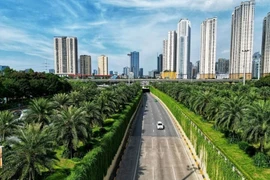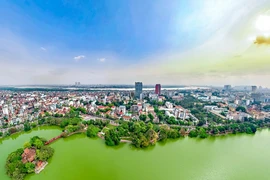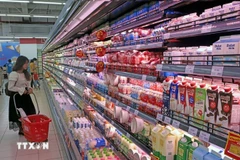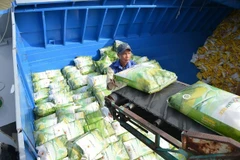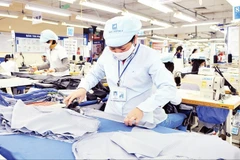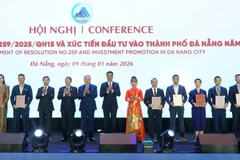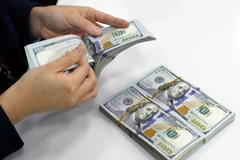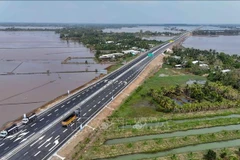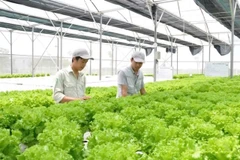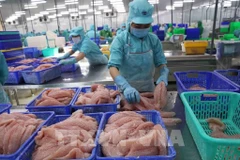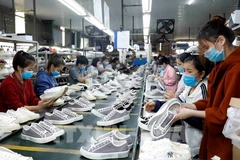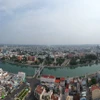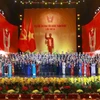Hanoi (VNS/VNA) – As Hanoi faces mounting population pressure and land scarcity, satellite cities are emerging as a solution for urban expansion and long-term real estate investment, said industry experts and insiders at a seminar on May 15 in the capital.
They said that with the gradual completion of key ring roads and inter-provincial expressways, the property market is shifting beyond Hanoi’s core to dynamic growth hubs such as Bac Ninh, Hung Yen, Vinh Phuc, and Ha Nam.
Dr Nguyen Van Dinh, Vice Chairman of the Vietnam Real Estate Association (VNREA), said the Capital Region is undergoing a fundamental transformation towards a more sustainable, multifunctional, and interlinked urban structure.
While Hanoi remains the economic driver in finance, logistics and innovation, neighbouring localities are evolving into manufacturing and logistics belts, supplying land, labour and support services, particularly for high-tech industries.
He said that after administrative streamlining, the Capital Region could operate more effectively, contributing 25–28% of national GDP by 2030, equivalent to over 3 quadrillion VND (115.7 billion USD).
Infrastructure development is shaping the region along two key axes: ring roads that connect the broader region and expressways and rail lines that link Hanoi to satellite cities. Prioritising public transport will accelerate mobility and foster a unified regional property market.
Population decentralisation is also spurring large-scale suburban cities. Provinces like Bac Ninh, Hung Yen and Vinh Phuc aim to become centrally governed cities, driving integrated urban-industrial development, green infrastructure, and smart, resort-style living.
Hanoi’s role as the central hub ensures growth is distributed across the region. Industrial provinces such as Bac Giang, Thai Nguyen, and Vinh Phuc are thriving, thanks to improved connectivity. This balanced growth not only eases pressure on Hanoi but also creates a multi-centred urban network in the north.
“With infrastructure, decentralisation policies, and rising investment capital, satellite cities and suburban mega-urban areas will become high-potential 'extended cities' for both living and investment in the next five to 10 years,” Dr Dinh said.
Infrastructure
From a planning perspective, architect Tran Ngoc Chinh, Chairman of the Vietnam Urban Planning and Development Association, said the expanding Capital Region is becoming a new national strategic economic centre, especially as Vietnam shifts to a development model driven by regional connectivity.
Ongoing administrative mergers and cross-border infrastructure projects, particularly railways, are generating strong momentum for real estate.
Assoc. Prof. Dr Tran Dinh Thien, member of the Prime Minister’s Economic Advisory Council, stressed that the Capital Region should no longer be viewed just as Hanoi’s hinterland, but as a “centre of centres”, a convergence point for growth and innovation.
He urged a mindset shift: opportunities now lie in expanding into new geographical and institutional spaces, not the traditional urban core.
Strategically, the region borders China, Vietnam’s top trading partner, and is the only one set to host two high-speed rail corridors: one linking Kunming (China) with Hanoi–Hai Phong via Lao Cai, and the other being the North–South high-speed rail, starting with the Hanoi–HCM City section.
Alongside railways, the Capital Region is developing a modern highway network. A standout project is the 100-kilometre coastal expressway from Hai Phong to Ninh Binh via Thai Binh, Northern Vietnam’s largest highway, with 10 lanes. As the eastern backbone of the region, it will unlock major opportunities for coastal industrial, logistics, and residential real estate.
Another key development is the proposed route connecting Gia Binh Airport in Bac Ninh to Hanoi via Tu Lien Bridge. The bridge is not only a vital transport link but also an urban design landmark, enabling a modern northern Hanoi corridor.
“If Gia Binh becomes a satellite international airport, the route to the city centre will be a powerful growth axis, drawing investor interest to its key junctions,” said architect Chinh.
Satellite localities such as Hai Phong, Ha Nam, Hung Yen and Ninh Binh are already seeing surging investment in infrastructure, real estate and tourism. New regional and inter-provincial railway lines are taking shape, connecting them efficiently with Hanoi./.

Capital ramps up tourism promotion efforts
Hanoi’s tourism sector is set to introduce distinctive travel experiences as part of its ambitious goal to welcome 31 million visitors, including approximately 7.5 million foreigners.

